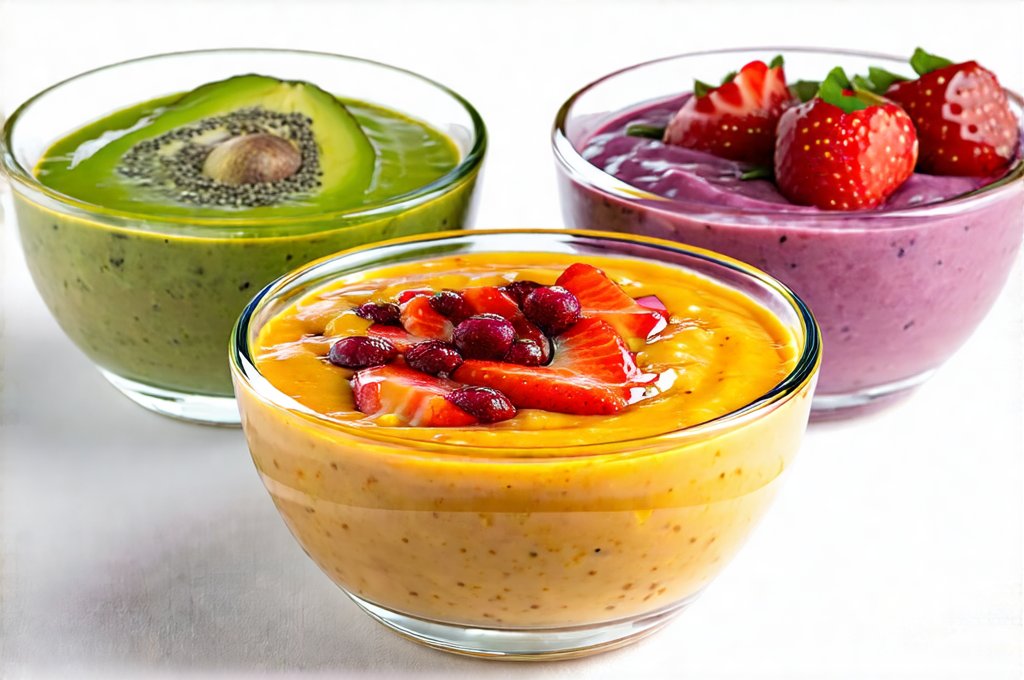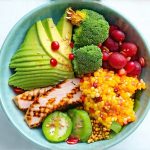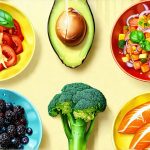Smoothie bowls have exploded in popularity as a vibrant and seemingly healthy breakfast or snack option. Often adorned with colorful fruits, seeds, and granola, they appear effortlessly appealing – but for individuals managing Irritable Bowel Syndrome (IBS) and/or acid reflux, these visually stunning creations can quickly become sources of discomfort and digestive distress. The challenge isn’t necessarily eliminating smoothie bowls altogether; it’s understanding the potential triggers hidden within their components and learning how to construct a bowl that supports, rather than sabotages, gut health. Many standard recipes rely on ingredients notorious for exacerbating IBS symptoms (like high-FODMAP fruits or excessive fiber) or triggering reflux (high acidity, fatty additions).
The key to enjoying smoothie bowls without unpleasant consequences lies in mindful ingredient selection and careful preparation. This requires a shift in perspective – moving away from the aesthetic ideals often portrayed online and towards a focus on digestibility. It’s about prioritizing gut comfort over Instagram-worthiness. We’ll explore how to deconstruct the typical smoothie bowl, identify common problematic ingredients, and rebuild it using choices that are gentle on sensitive systems. This guide isn’t about deprivation; it’s about empowerment – giving you the knowledge to create a delicious and nourishing bowl tailored to your specific needs and tolerances. If you struggle with meal planning in general, consider looking into batch-cooking for IBS and GERD-Friendly Weekly Meals to help streamline your process.
Building Your Base: The Foundation of Comfort
The base is arguably the most crucial part of a smoothie bowl, as it constitutes the bulk of its ingredients and therefore has the greatest potential impact on digestive health. Traditional bases often feature bananas (high FODMAP for many), large quantities of berries (moderate FODMAP), or mangoes (also high FODMAP). These can be excellent choices for some but problematic for others. A safer starting point is a low-FODMAP frozen fruit like blueberries in moderation, or even cooked and cooled sweet potato or butternut squash – surprisingly versatile options that provide creaminess without the same digestive risks. Consider incorporating gut-friendly fats like avocado (in small amounts) to enhance texture and satiety while remaining gentle.
The liquid component also matters significantly. Dairy is a common trigger for both IBS and reflux, so plant-based milks are generally preferred. However, even among plant-based options, choices vary in digestibility. Almond milk can be problematic for some due to its potential for bloating, while oat milk may contain gluten (for those with sensitivities). Coconut water or lactose-free milk alternatives often provide a safer base. Avoid excessive liquid; the goal is a thick, spoonable consistency rather than a drinkable smoothie. Ultimately, listen to your body and track which bases consistently cause issues. Building a daily digestive diet routine can also help you stay on track with identifying triggers.
The blending process itself can play a role. Overblending can create an overly airy texture that contributes to bloating in sensitive individuals. Aim for a smooth but slightly textured base – allowing some of the fruit’s natural fibers to remain intact aids digestion. Remember, slow is often better when it comes to processing food for IBS and reflux sufferers.
Toppings That Tame: Avoiding Flare-Ups
Toppings are where smoothie bowls can easily go wrong. Granola, a staple in many recipes, often contains high levels of fiber, sugar, and potentially irritating ingredients like nuts and seeds (which can be hard to digest). Similarly, large quantities of chia seeds or flaxseeds, while nutritious, can exacerbate IBS symptoms due to their fiber content. Instead, focus on low-FODMAP options that add texture and flavor without triggering discomfort. Toasted coconut flakes (in moderation), a sprinkle of pumpkin seeds (also in moderation – they’re relatively well-tolerated by many), or a few blueberries are all good choices.
Nuts and seeds can be reintroduced cautiously if tolerated, but begin with small amounts and monitor for any adverse reactions. Avoid highly processed toppings like chocolate chips or sweetened cereals. A drizzle of maple syrup (in very limited quantities) can add sweetness without the artificial ingredients found in some sweeteners. The principle here is simplicity. Less is often more when you’re managing digestive sensitivities. Prioritize whole, unprocessed foods that are easy to digest. If you’re looking for quick and easy meal ideas, explore easy lunches for IBS without garlic or onion.
Navigating FODMAPs: A Personalized Approach
FODMAPs (Fermentable Oligosaccharides, Disaccharides, Monosaccharides And Polyols) are a group of carbohydrates that can cause digestive distress in individuals with IBS. Understanding which FODMAPs trigger your symptoms is paramount. The low-FODMAP diet isn’t necessarily about eliminating all FODMAPs permanently; it’s about identifying your individual triggers and adjusting your diet accordingly. – Start by using a reliable low-FODMAP food list as a guide (Monash University offers an excellent app). – Introduce new foods one at a time, monitoring for any changes in symptoms. – Keep a food diary to track what you eat and how it affects your digestion.
It’s important to remember that FODMAP tolerance varies greatly from person to person. What triggers one individual may not affect another. Don’t blindly follow online recommendations; tailor your diet to your unique needs and sensitivities. Working with a registered dietitian specializing in IBS can be incredibly helpful in navigating the complexities of FODMAPs and developing a personalized eating plan. Understanding the connection between IBS and anxiety and finding calming foods for the gut-brain axis can be beneficial, too.
Managing Acid Reflux: Minimizing Irritation
Acid reflux is often triggered by foods that are high in acidity, fat, or spice. Citrus fruits, tomatoes, chocolate, caffeine, alcohol, and fatty meats are all common culprits. In the context of smoothie bowls, this means limiting acidic berries like oranges and grapefruit, avoiding excessive amounts of coconut (which can be high in fats), and steering clear of ingredients that stimulate acid production. – Choose low-acid fruits as your base, such as blueberries or cooked sweet potato. – Opt for plant-based milks with lower fat content. – Avoid adding spices or highly flavorful ingredients.
Eating smaller portions can also help prevent reflux. Overfilling the stomach puts pressure on the lower esophageal sphincter (LES), increasing the risk of acid flowing back into the esophagus. Eating slowly and thoroughly chewing your food aids digestion and reduces strain on the digestive system. Finally, consider elevating the head of your bed while sleeping to minimize nighttime reflux symptoms. If you experience diarrhea as well, a diet plan for IBS and stomach upset might be helpful.
Portion Control & Mindful Consumption
Even with carefully selected ingredients, overeating can trigger IBS or reflux symptoms. The key is portion control – starting with a smaller bowl and gradually increasing the amount if tolerated. Pay attention to your body’s signals of fullness and stop eating when you feel satisfied, not stuffed. – Be mindful of how quickly you’re consuming your smoothie bowl. Eating too fast can overwhelm the digestive system. – Chew each bite thoroughly to aid digestion. – Avoid distractions while eating (such as watching TV or scrolling through social media) to allow yourself to focus on your body’s cues.
Mindful consumption isn’t just about what you eat; it’s also about how you eat. Taking the time to savor each bite and appreciate the flavors can enhance your enjoyment of the meal while promoting better digestion. Remember, food is not only nourishment but also an experience – one that should be enjoyed without fear or discomfort. Furthermore, consider safe probiotics for IBS and GERD patients to support gut health.


















